Step inside cereal king William Kellogg's abandoned mansion lost to the wrecking ball
Take a final tour of the Kellogg King’s razed mansion
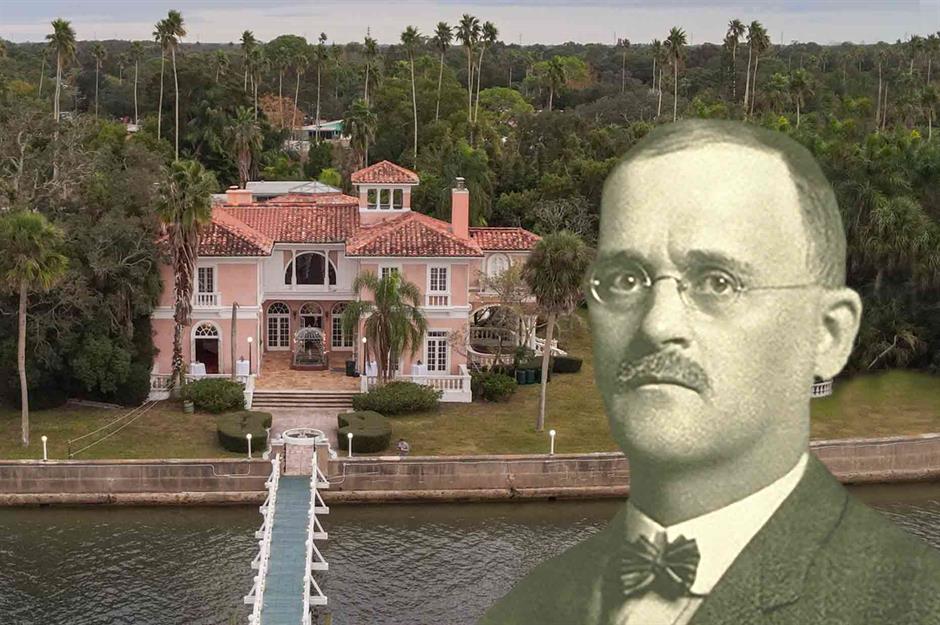
It was once one of Florida's most admired landmarks, but this breathtaking Mediterranean Revival mansion in Dunedin was reduced to rubble in 2021. Formerly the home of a famous cereal tycoon, even its storied past wasn't enough to save it from the wrecking ball. But while the mansion may be consigned to history, the memory of this extraordinary residence lives on.
Click or scroll on to take a last look at the Kellogg manse and tour its exquisite time-capsule interior, captured just before its tragic demolition.
A lost architectural treasure
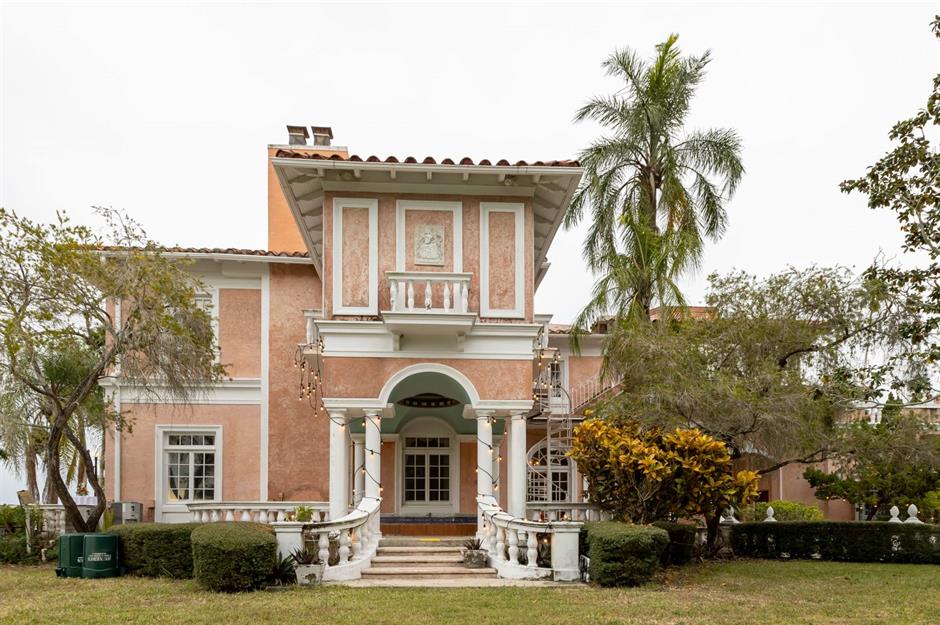
Photographer Leland Kent of Abandoned Southeast was given permission to document the magnificent 7,600-square-foot residence in all its glory before it was lost forever.
Drawing inspiration from 16th-century Italian Renaissance buildings, the Kellogg mansion's majestic pink and white stucco rose from an overgrowth of shrubs and palm trees on a waterfront plot overlooking the Gulf of Mexico. The palatial façade featured an imposing portico framed by classical columns.
Despite being a priceless piece of architectural history, the house was never added to the National Register of Historic Places, a detail that contributed to its tragic fate.
An enchanting interior
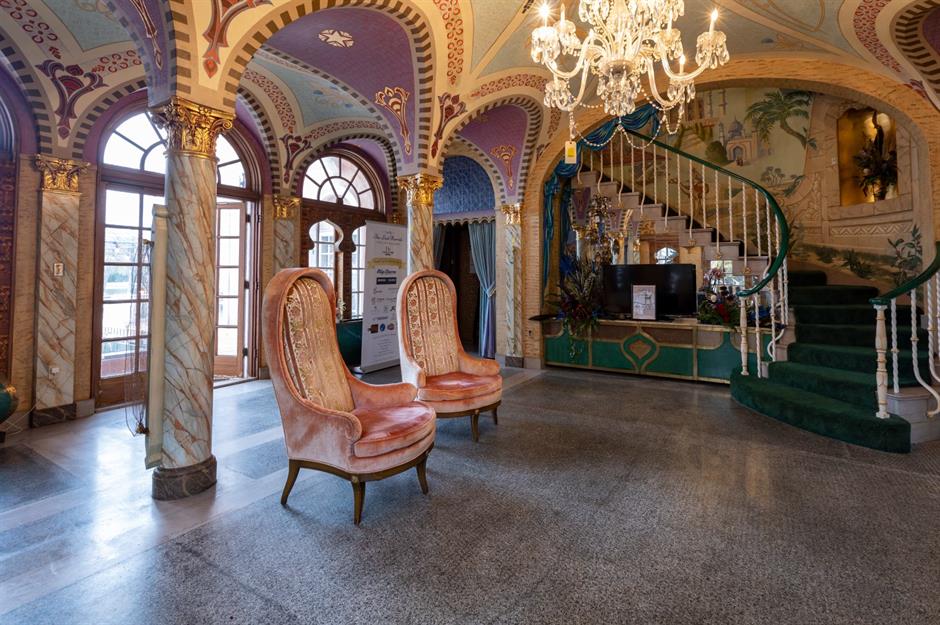
Stepping into the entrance foyer, visitors were met by marble columns with gold-leaf Corinthian capitals, capped by Moorish arches featuring colourful, hand-painted murals.
According to the Dunedin Historic Preservation Advisory Committee, some of the murals were commissioned by the mansion’s most famous owner, an industry tycoon whose invention may well be in your breakfast bowl every morning – William Keith Kellogg, the Corn Flakes cereal king.
The jewel of a new community
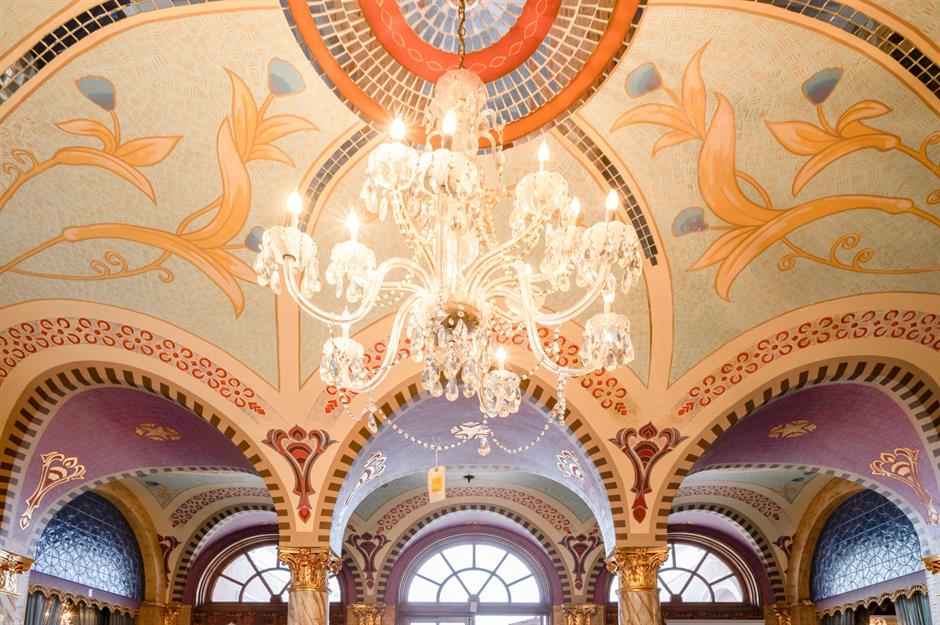
The foyer's exquisite ceiling murals were outlined by stunning mosaic detailing, while the glittering chandelier likely dated from the Roaring Twenties when the house was built.
In 1925, businessman Edward Frischkorn began developing a new waterfront community in Dunedin, Florida, known as Dunedin Isles. Laying down roots in the neighbourhood he'd created, he picked a prime spot on the coast to build his own home, overlooking the idyllic Caladesi Island and Honeymoon Island. The stately property was originally called Villa Moreno.
Inspired by royal palaces
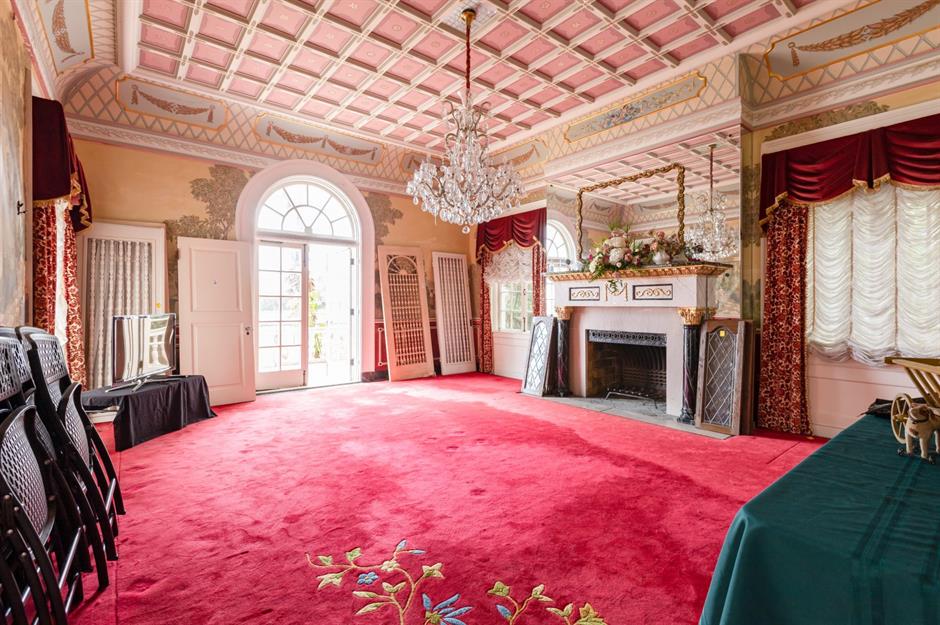
Once the height of opulence, this whimsical living room wouldn’t have looked out of place in a French château. In fact, royal palaces and grand villas were a key influence on Mediterranean Revival architecture, which was at its peak during the 1920s.
The room's hand-carved coffered ceiling was a stand-out feature, with its elaborate rose and white design. Meanwhile, the marble columns that flanked the fireplace were designed as miniature versions of the ones in the foyer.
Intricate artwork
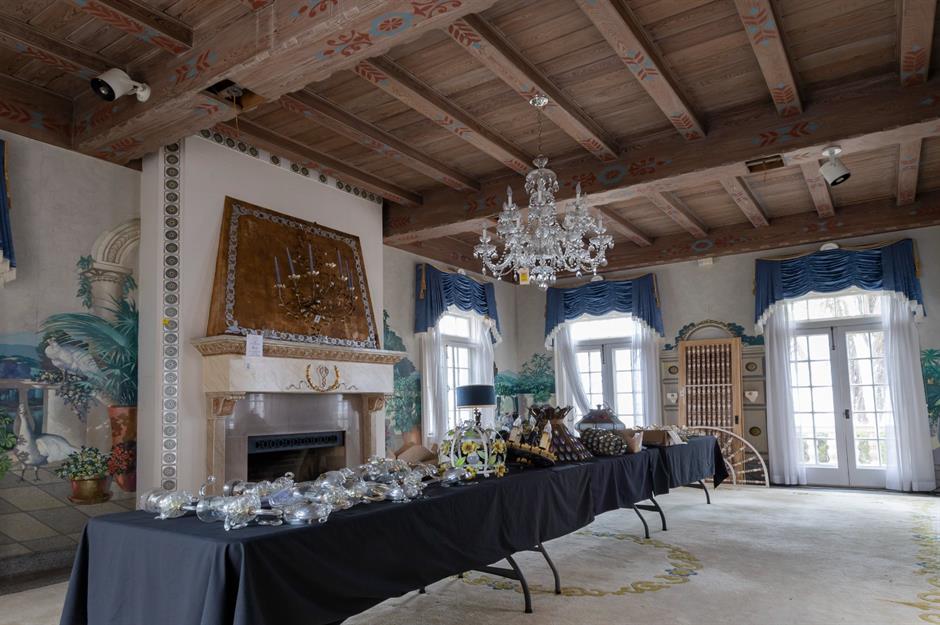
Bursting with character, the dining room continued the enchanting interior narrative. A Grecian mural wall rendered in soft blue hues framed the fireplace, which was topped with an ornate metal hood.
Overhead, the beamed wood ceiling took centre stage thanks to its beautiful hand-painted floral motifs, while swagged velvet curtains crowned the floor-to-ceiling windows, chanelling an air of the theatrical.
A winter retreat
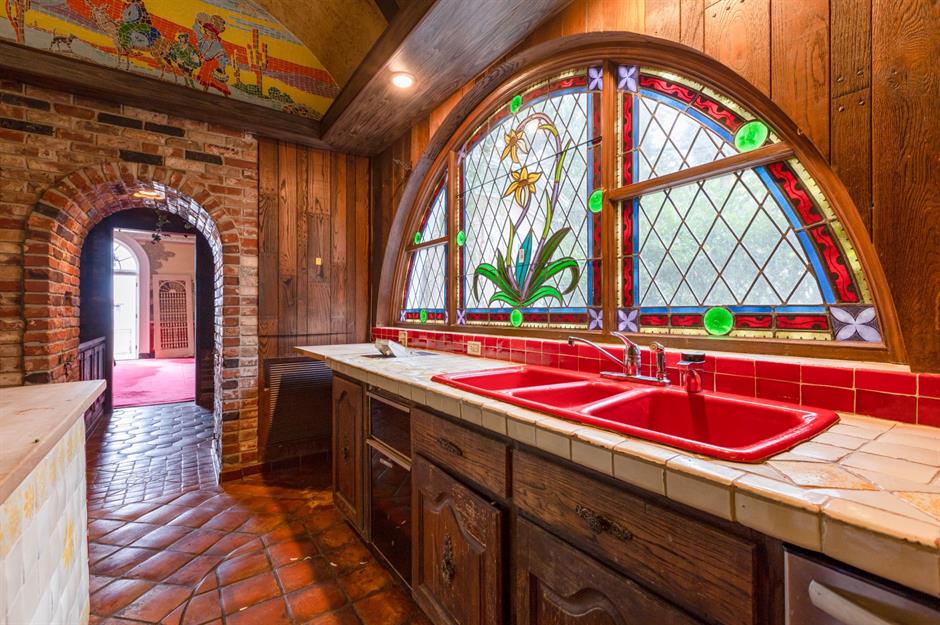
Elsewhere, this downstairs kitchen embraced a rustic, hacienda aesthetic, with exposed brickwork, red-tile flooring, simple wooden cabinetry and a mosaic depicting a desert scene. Arches were a reoccurring architectural feature, repeated in the shape of the doorway and the radiant stained-glass window.
The house became known as the Kellogg mansion when William Kellogg purchased the property in 1934 as his winter retreat. Despite Kellogg reportedly spending just two winters at the estate, the moniker stuck.
Chanelling the Mediterranean
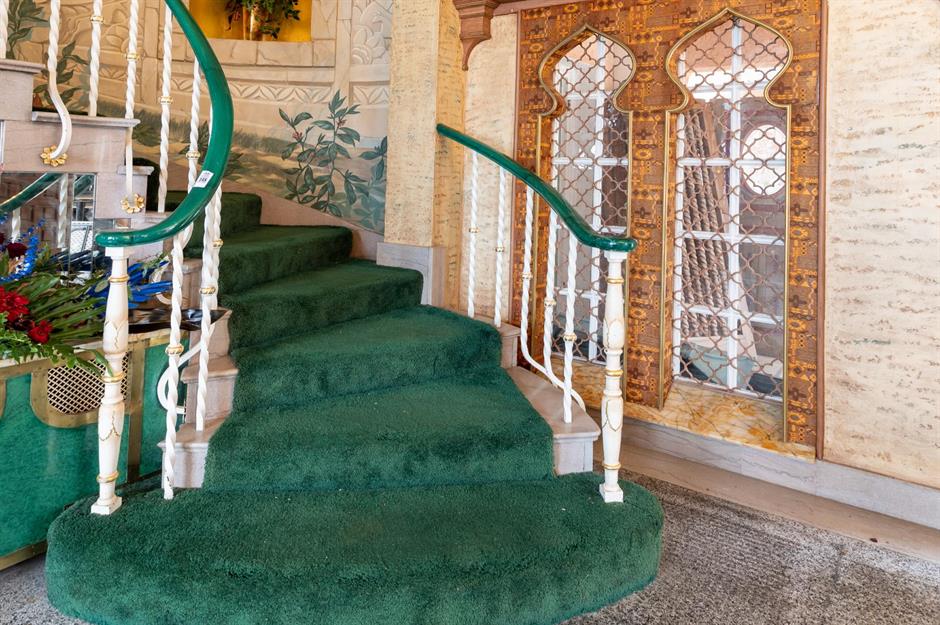
The house is thought to have been the work of renowned American architect Addison Mizner, whose love of Spanish Colonial Revival and Mediterranean Revival design defined his career.
Examples of Mizner's aesthetic were evident throughout the house, including in the highly ornate curved staircase in the main foyer, with its gilded marble spindles and rich green handrail.
Going up!
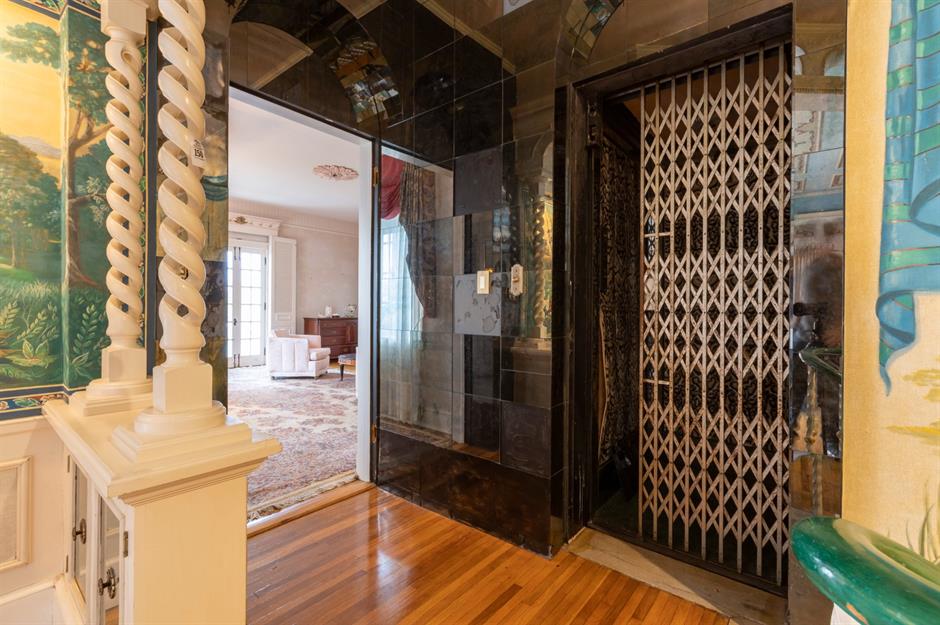
Those looking for a faster way to navigate the mansion's floors could take the elevator to the second floor. But this was no ordinary metal-lined cab. Rather, the plush space was upholstered with luxurious leopard-print velvet.
On the upper-floor landing, the walls were clad in reflective, black marble and more elaborate murals, while intriguing spiral columns imparted architectural intrigue.
A storied history
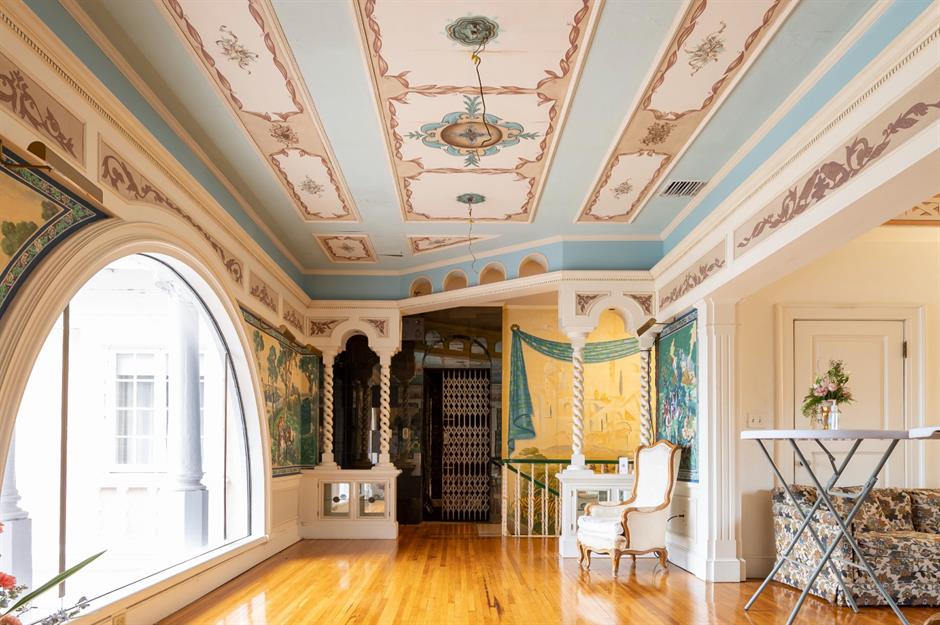
Indeed, the landing looked more like a grand ballroom than a hallway, with a polished wooden floor and an intricate pastel ceiling featuring hand-painted floral detailing.
Across its illustrious history, the mansion had played host to many different residents. During World War Two, it became a base for US Marines. The military tested tank-like amphibious vehicles, nicknamed ‘Alligators’, by piloting the monstrous machines from the property to the romantically named Honeymoon Island nearby.
Billion-dollar cereal flakes
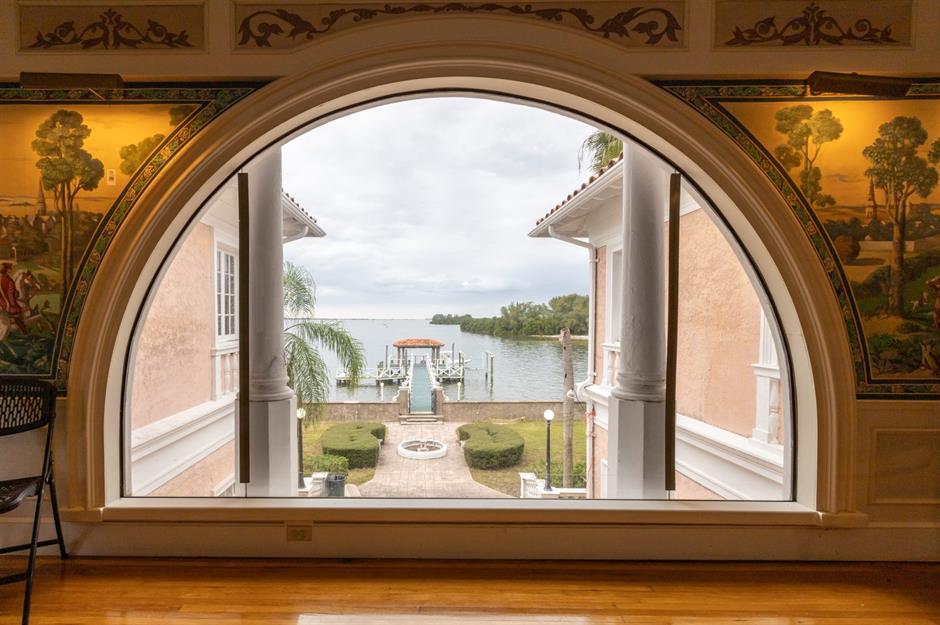
Imagine sitting by this arched window on a sunny day, surrounded by breathtaking wall murals, looking out across the sparkling water. It's no wonder that the house caught William Kellogg's eye – and he certainly had plenty of money to invest in the place.
It’s thought that William and his brother accidentally invented Corn Flakes in 1898 during a failed attempt at making granola. Today, Kellogg's products are sold in 180 countries and the company is valued at over $19 billion (£15.3bn).
Majestic master suite
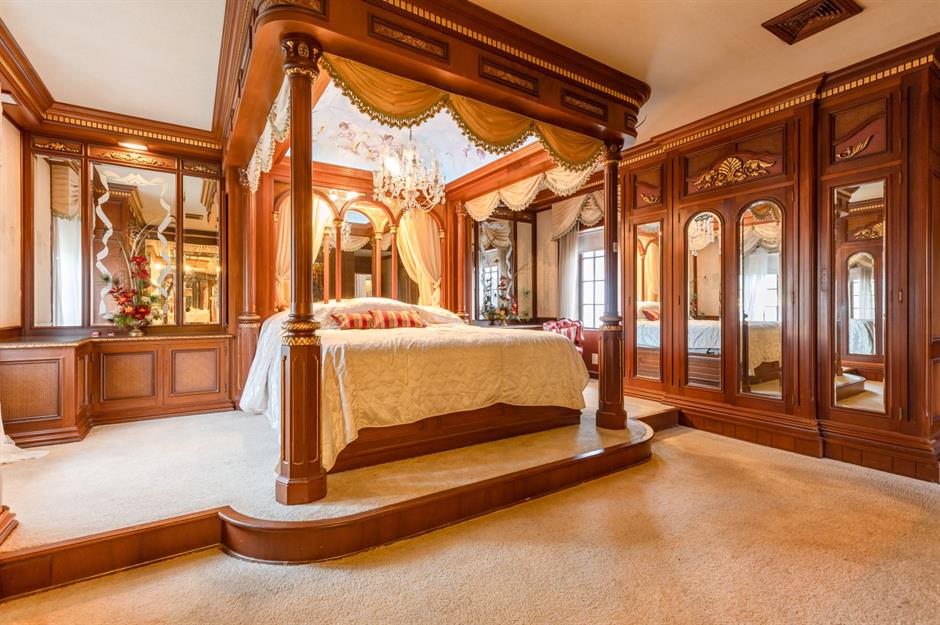
Elsewhere on the upper floor, the master bedroom was befitting of royalty. Elevated on a platform, the space was dominated by a majestic cherry-wood canopy bed, which was encircled with wood trim and adorned with delicate gilded carvings. The wood was sourced from the estate of President Thomas Jefferson’s father, according to the Tampa Bay Times.
Dressed to impress
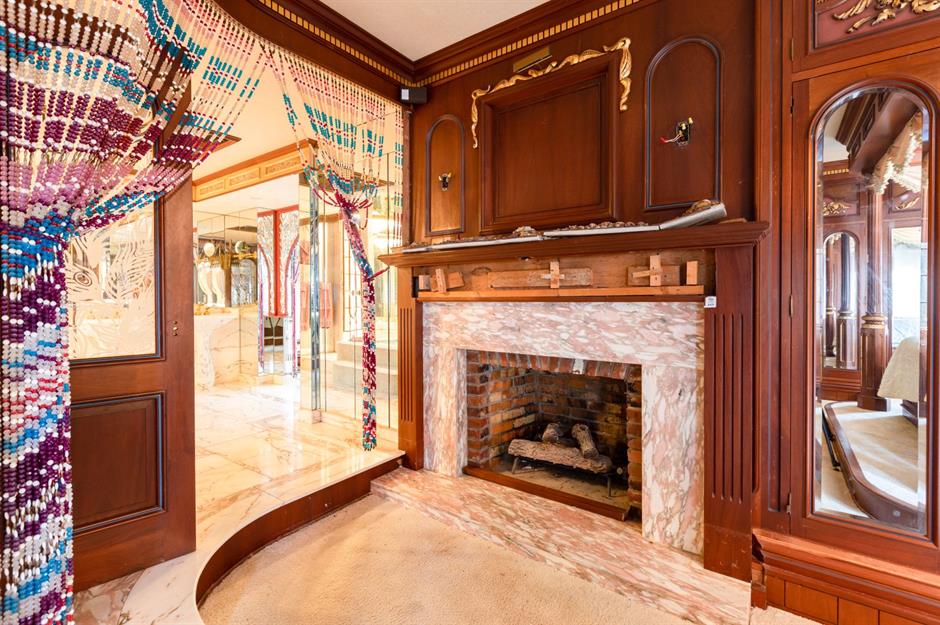
There was plenty of space for getting ready in this adjoining gold-trimmed dressing room, complete with mirrored wardrobes and a cosy hearth with a marble surround.
The decoration of the master bedroom and bathroom areas is not original to William Kellogg’s tenure at the house – rather, it was revamped by later owners.
Opulent master bathroom
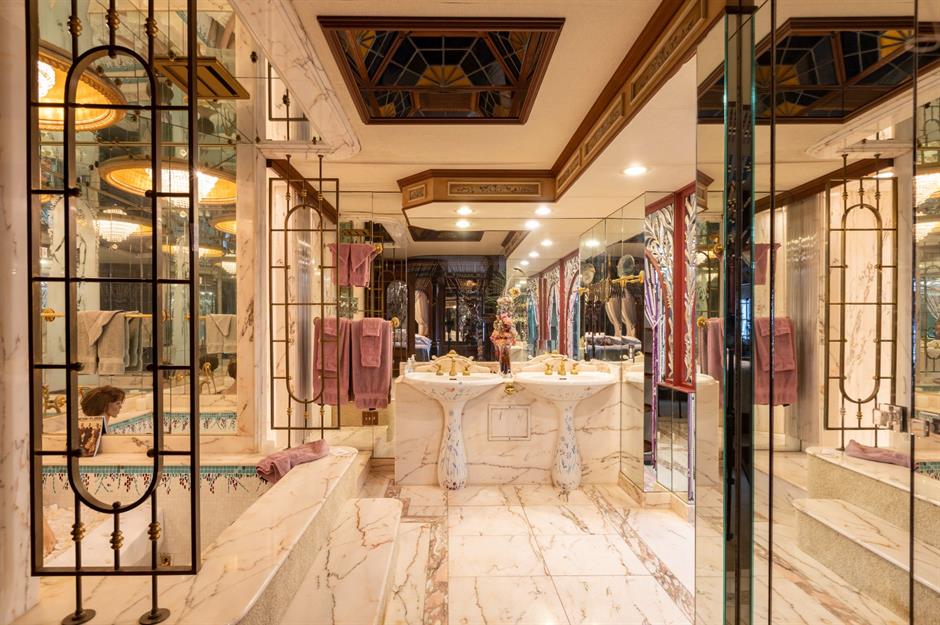
Leading off from the main bedroom, the master bathroom featured opulent floor-to-ceiling marble and a large marble hot tub, the utmost in luxury at the time. Vast mirrored walls created the illusion of an expansive spa, punctuated by decorative Art Deco-style panels.
According to the son of a former owner, each of the home's bathrooms contained a special tap that chanelled salt water from the ocean, which was believed to possess health-giving properties thanks to its rich mineral content.
Palatial powder room
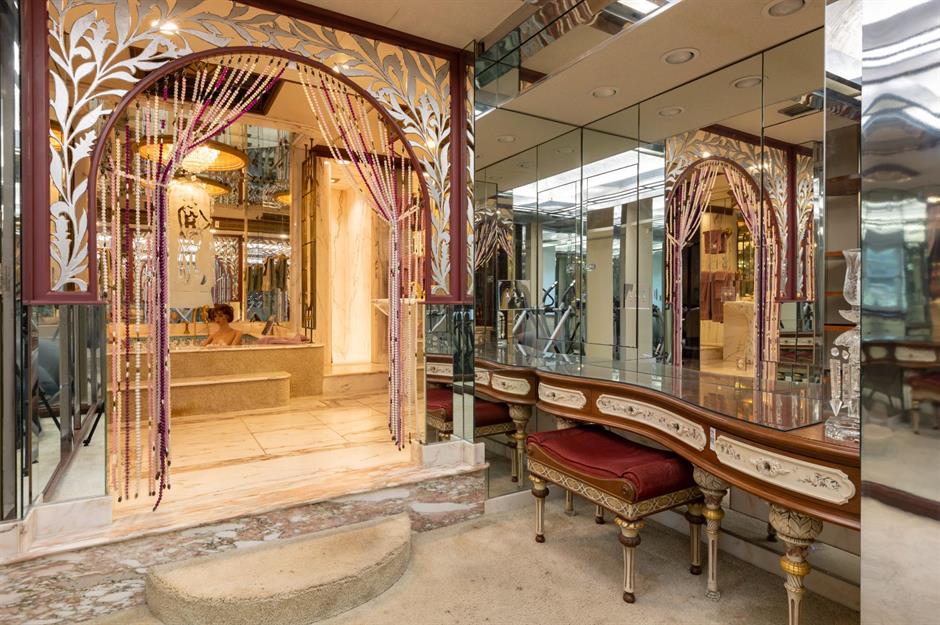
Adjoining the bathroom was a splendid powder room that featured a dressing table with lavish carvings across its legs. But the star of the show was the remarkable glass room divider, which was skillfully rendered as a bough of foliage.
It's hardly a surprise that William Kellogg had the funds to maintain such an opulent home. An astute businessman, Kellogg was the first manufacturer to put gifts, such as toys and book vouchers, into his cereal boxes in 1909. The decision led to children clamouring for Kellogg's cereals and resulted in an enormous boon for business.
Regal decorations
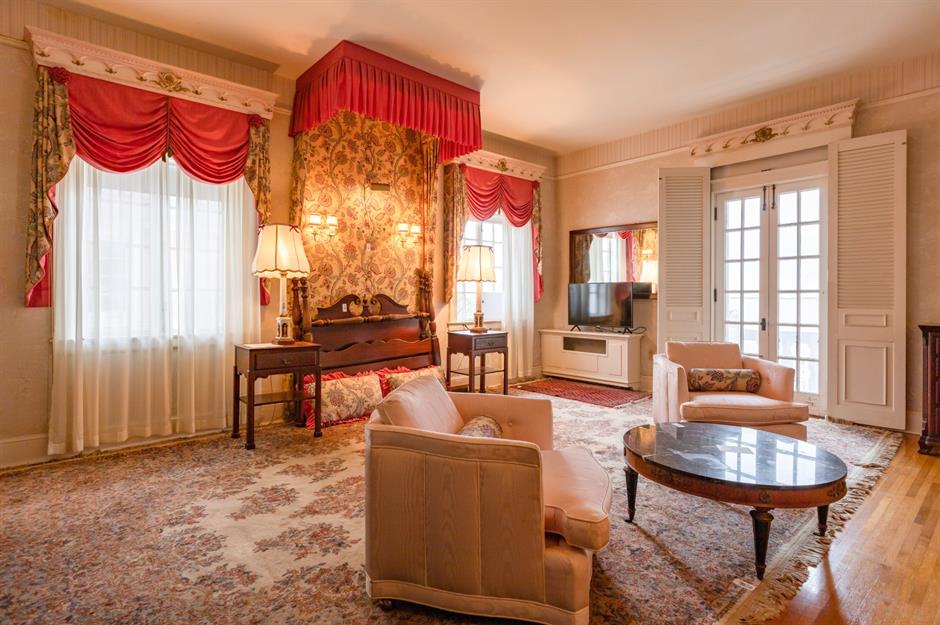
Despite the missing bed, this upstairs bedroom was designed to be equally as lavish with a sumptuous curtained canopy suspended from the ceiling. The swathes of swagged curtains that framed the windows reinforced the room's regal design. Notice the beautiful French doors that opened out onto a balcony, where spectacular views of the water could be glimpsed.
From flakes to philanthropy
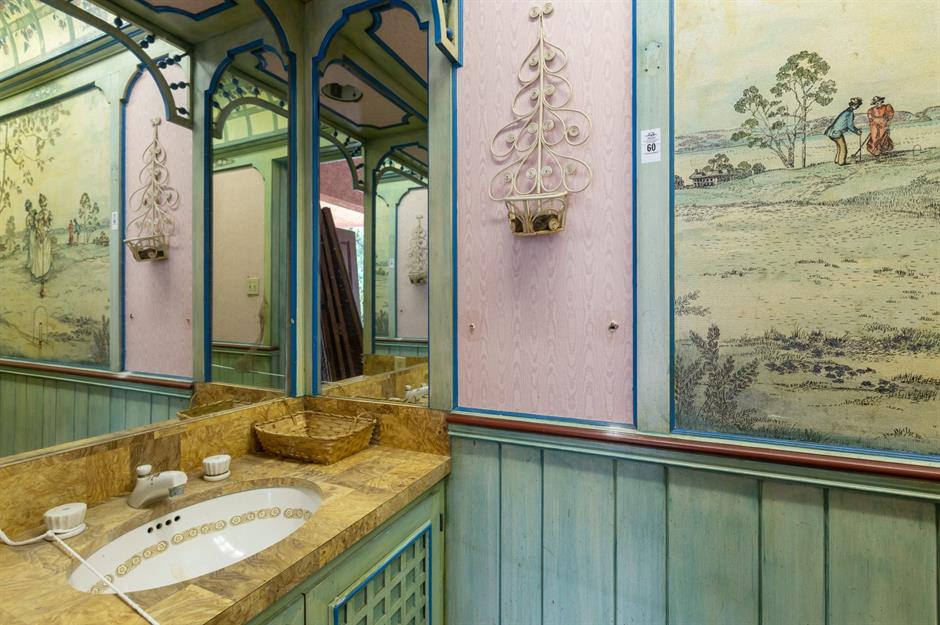
This ensuite bathroom was compact but still had plenty of eccentric decorative details, including the unusual blue and lilac colour scheme and the painted mural of a couple playing croquet.
Kellogg eventually donated the house to his charity. The Kellogg Foundation was set up in the 1930s to improve the education and health of children around the world. It now ranks among the world's largest private philanthropic foundations.
A change of hands
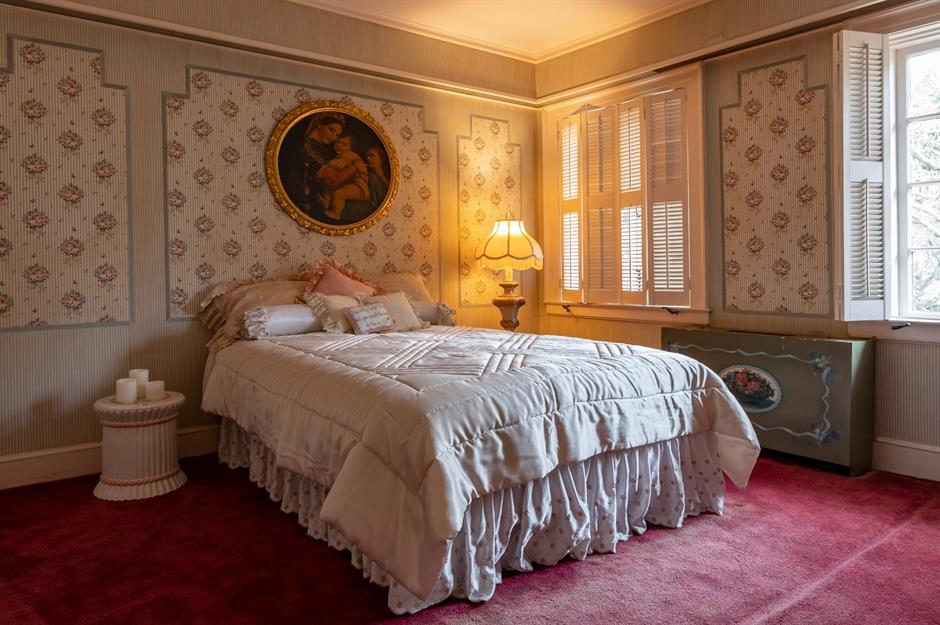
Meanwhile, this bedroom featured a more delicate aesthetic, encompassing floral wallpaper, a pink thick-pile carpet and a pale pink bedspread and pillows, plus a religious painting of a mother and child in an ornate gold frame.
The house was sold by the Kellogg Foundation in 1946 for $63,500 to William and Caroline Nolan according to the Tampa Bay Times, the equivalent of around $1 million (£804k) in modern money. From then on, it remained under private ownership.
Medieval references
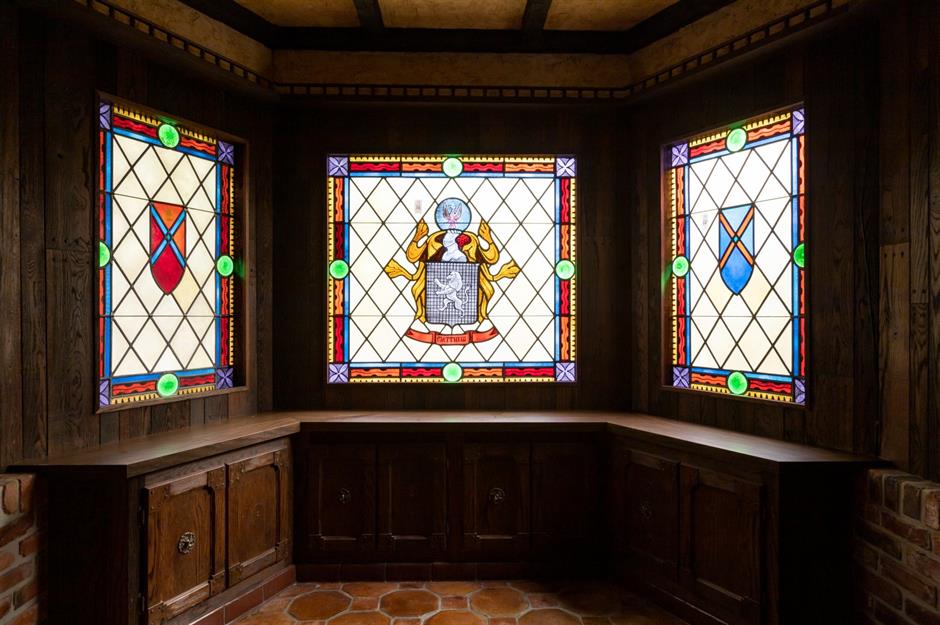
A patchwork of architectural styles, this intriguing niche wouldn't have looked out of place in a medieval castle, with its dark wood panelling and stained-glass windows, complete with a family crest. In fact, the name engraved on the crest, "Matthew", provides a link to another influential owner of this wonderful home...
1960s dance floor
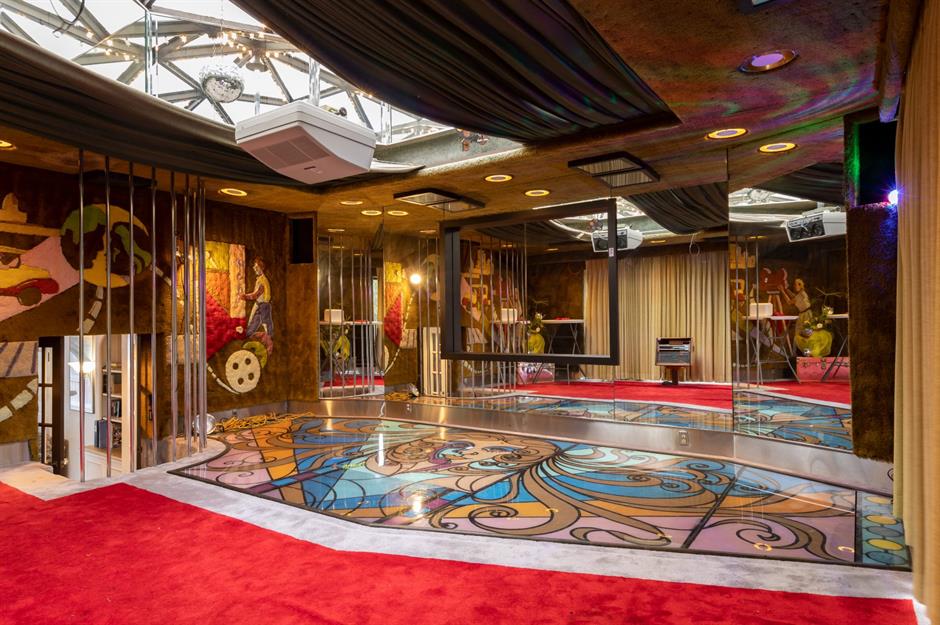
In the Swinging Sixties, newspaper broker Bill Matthew bought the Kellogg mansion and made it his home for the next four decades. He added many of the property's more flamboyant interior design flourishes.
For example, this amazing disco room had a fabulous painted floor created by famous psychedelic pop art painter Peter Max. It also featured an amazing planetarium ceiling that retracted so guests could dance the night away underneath the stars.
Welcome to the party palace
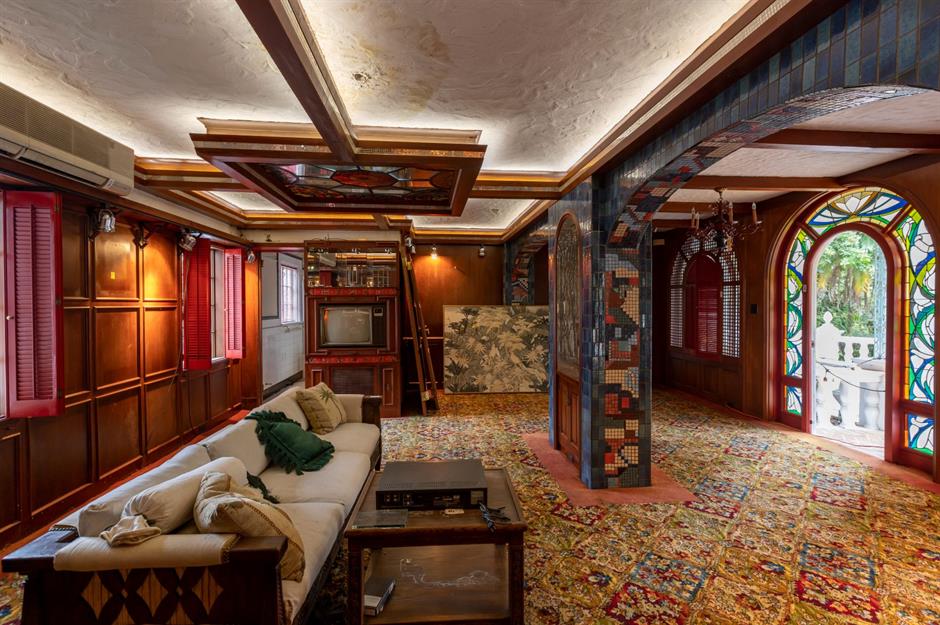
It’s easy to imagine the glamorous parties that might have taken place at the mansion. Bill installed this games room to entertain guests, which may once have hosted a pool table, card tables or even a slot machine.
In keeping with the home's original Mediterranean Revival roots, the ornate stained glass around the door arch allowed natural light to pour in, while intricate mosaics adorned the internal arches.
Media mogul
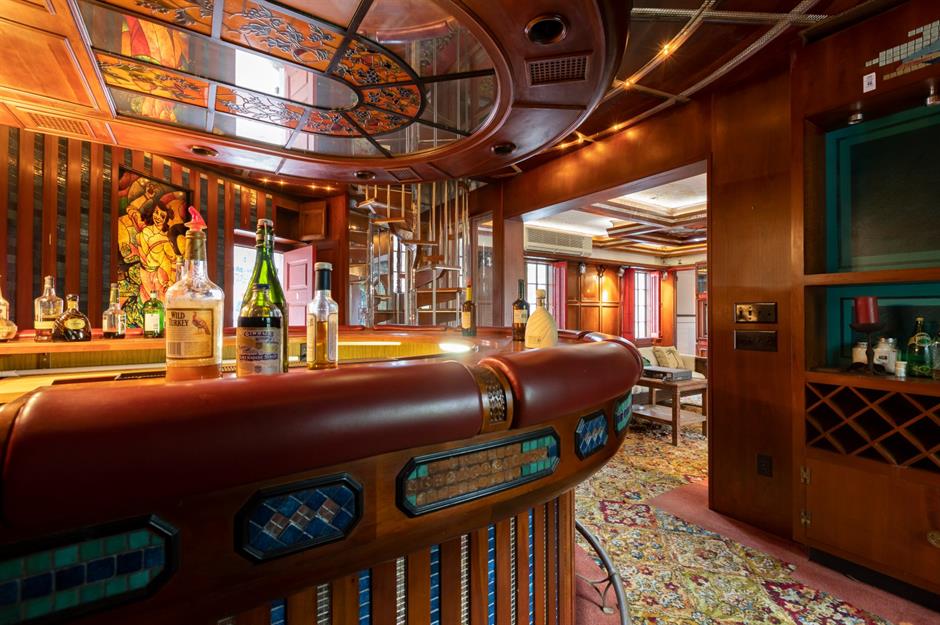
This curvaceous bar definitely had a louche '60s look to it, with a mosaic inlay and elaborate leather padding for punters to lean on. Above, a mirrored ceiling would have allowed guests to admire the handiwork of the bar staff.
Bill was a media mogul, brokering big-time sales and mergers of newspaper companies. He ran his business from the house – and it made him extremely wealthy.
Secret rooftop bar
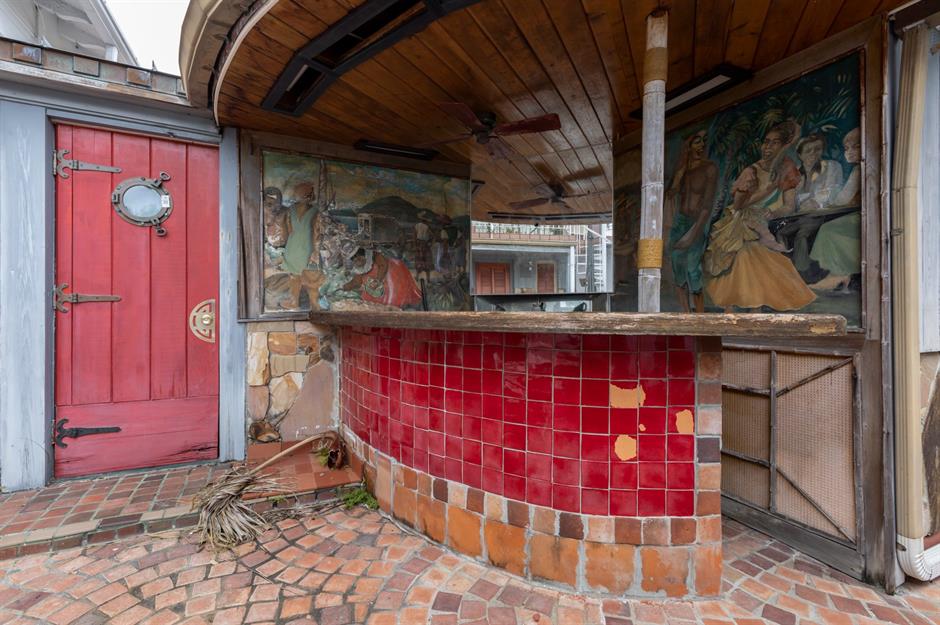
Discovering this bar up on the home's rooftop must have been a thrill for lucky guests. While it was in a poor state of repair when Kent photographed the house, the bar would've once been a cool hangout spot for Bill's guests. A lot of care went into its design, from the detailed Grecian-style mural to the rustic tiled bar front.
The mansion's numerous owners commissioned an array of murals over the decades, and Bill tapped local artist Don Ringelspaugh to add his own artistic friezes to the property. The talented artist also contributed to the decoration of the now-defunct but once nationally famous Kapok Tree Inn restaurant in Clearwater, Florida.
Relax to the max!
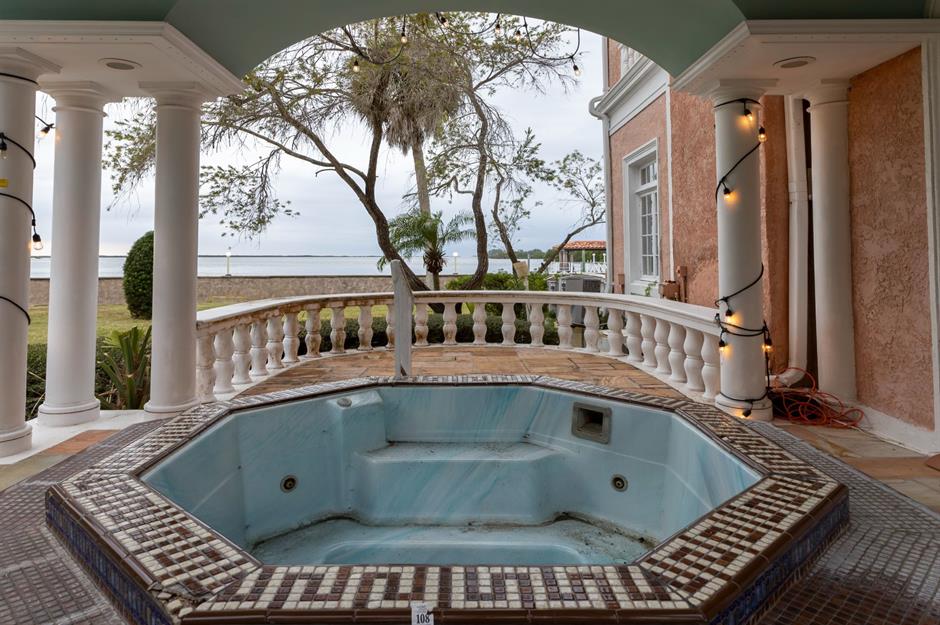
Soaking up the bubbles in this hot tub must have been a truly luxurious experience. Classical-style columns framed the waterside view and a monochromatic Greek key mosaic design encircled the tub. The soothing pink and white stucco of the exterior walls no doubt added to the relaxing feel.
Enchanting terrace
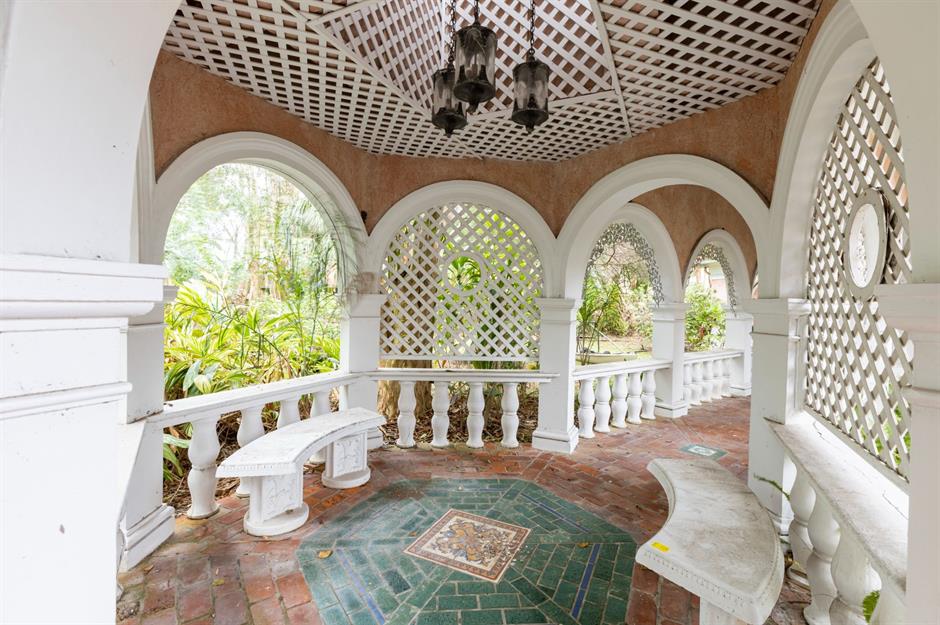
Embracing Moorish architectural references, this enchanting outdoor terrace seamlessly blended nature with architecture. The rhythm of archways and latticed wood framed glimpses of the surrounding grounds, while the hexagonal floor tiling created a bold, Grecian-inspired focal point.
Indoor-outdoor living
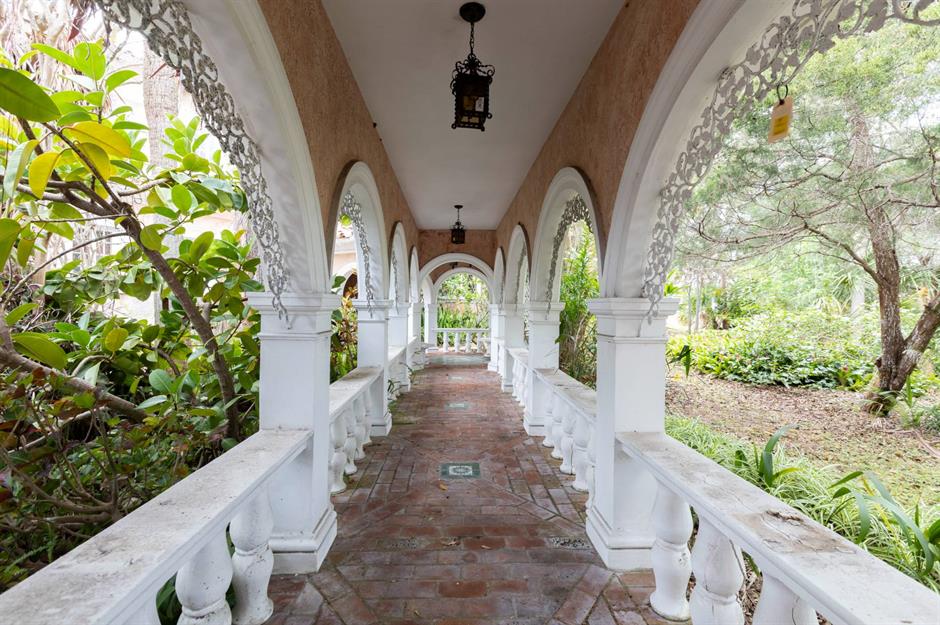
This grand covered walkway in the garden blurred indoor and outdoor living. Shielded from the hot midday sun, it was flanked by mature trees and shrubs, which would've once been manicured and beautifully landscaped. The walkway showcased the architect's impressive skill, with exquisite floral metalwork lining each arch.
Languishing on the market
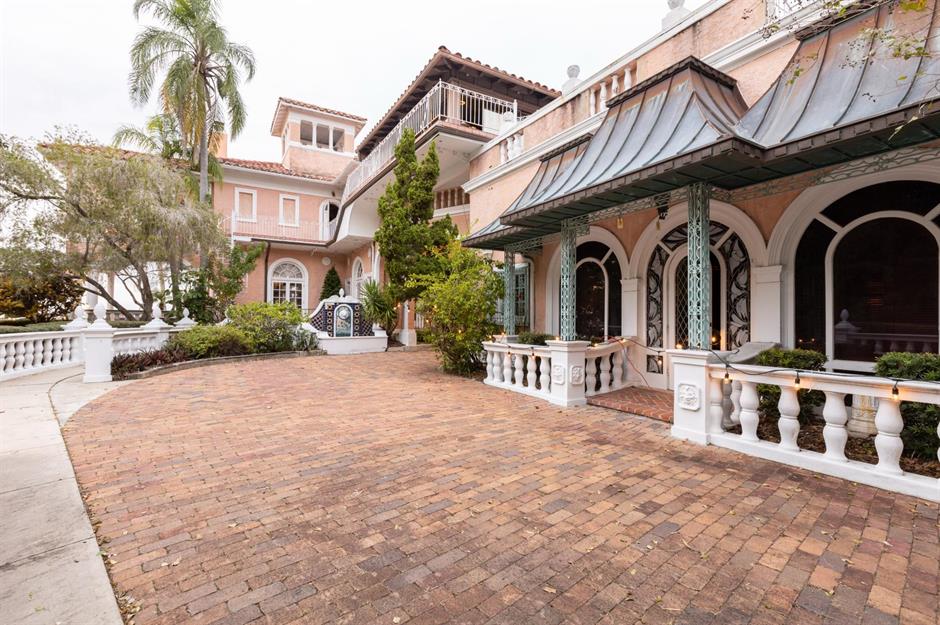
You can get a sense of how sprawling the mansion was from this shot, with its warren of intriguing alcoves and niches. The numerous balconies, terraces, walkways and floor-to-ceiling windows were part of the biophilic Mediterranean ethos of blending architecture and nature.
In 2013, the mansion found itself in need of a new owner again when it was put up for sale for $4.5 million (£3.6m). However, it languished on the market for the next seven years.
Doomed to the wrecking ball
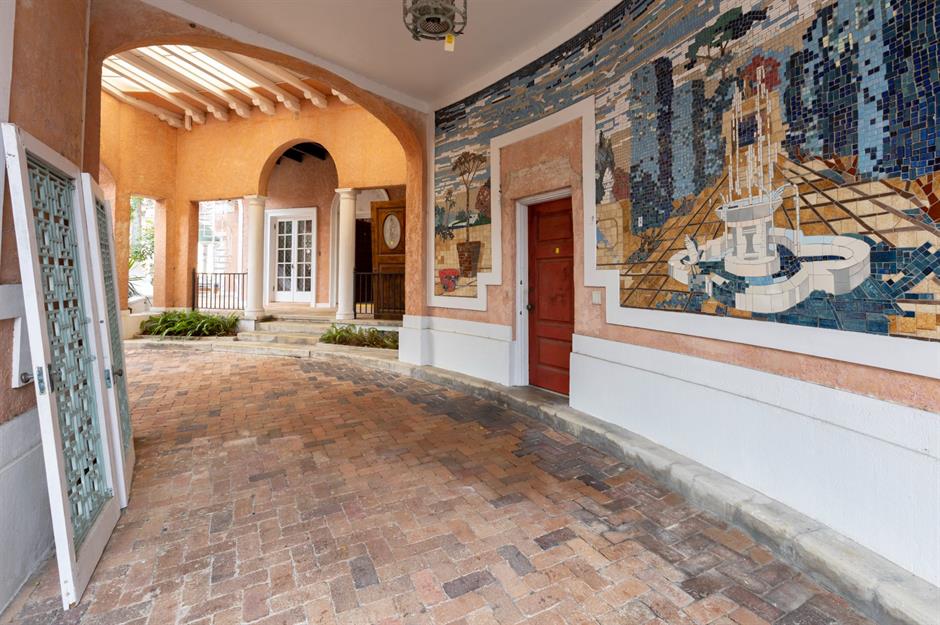
This was one of the home's external walkways, which featured an eye-catching mosaic mural of a Grecian water fountain.
Despite struggling to find a buyer, it seemed the mansion's fortunes had recovered when it sold in 2021 for $4 million (£3.2m). But in a devastating blow, the new owners filed for a demolition permit as soon as the deal closed on the property, citing extensive asbestos, mould and structural issues, which ultimately made the home uninhabitable.
Preservation attempts
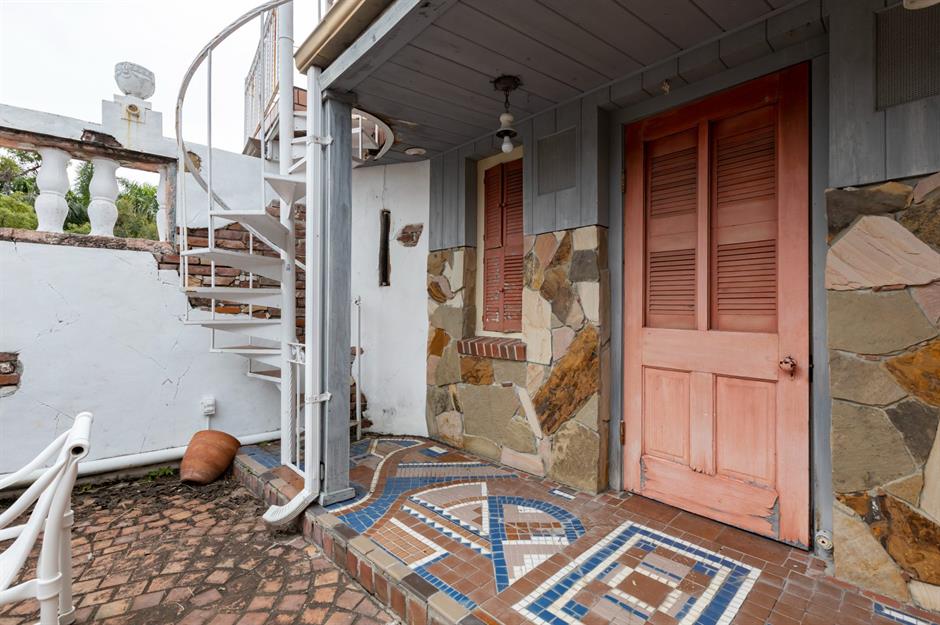
Sequestered around the side of the main property was a snug guesthouse, featuring beautiful mosaic flooring at its entrance.
In the wake of the permit's approval, attempts were made to salvage parts of the estate. However, a plan to save the guesthouse by transporting it to another location sadly fell through.
Stripped of its grandeur
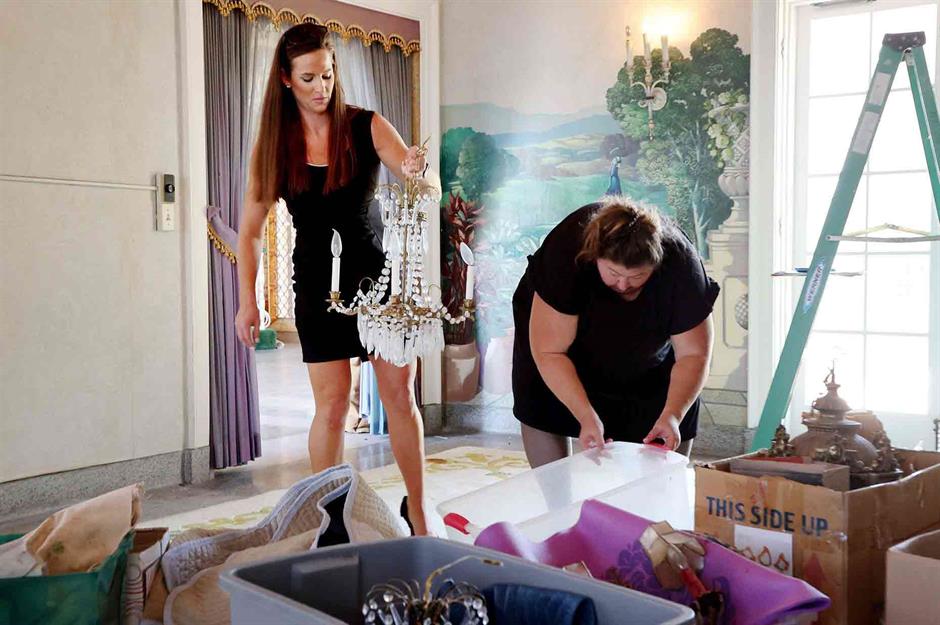
The home's structure may have been deemed beyond rescue, but its priceless antiques and fixtures were not. When ownership of the mansion was transferred, the buyer signed a contract with the seller and the mayor of Dunedin to allow the city to remove a number of historic statues and fixtures, which the owner claims were worth over $100,000 (£80k).
However, when the new owners got the keys after closing on the sale, they were dismayed to find that a number of items promised to the city including chandeliers and ironwork had already been removed, in an apparent miscommunication with a local salvage company. The valuables in question were later returned.
Reduced to rubble

The Kellogg mansion finally met the wrecking ball in the summer of 2021. The home's sad demise was captured here by the University of Florida's Center for Digital Heritage and Geospatial Information.
While efforts to reverse the demolition order failed, the house still survives – albeit not in its physical form. Prior to the building's razing, the University of South Florida's digital heritage team mapped and photographed the mansion in its entirety. The house has since been recreated using virtual reality technology and from September 2023 to March 2024, members of the public could tour the property in a virtual exhibit entitled the Kellogg Mansion Immersive Experience.
Gone but not forgotten
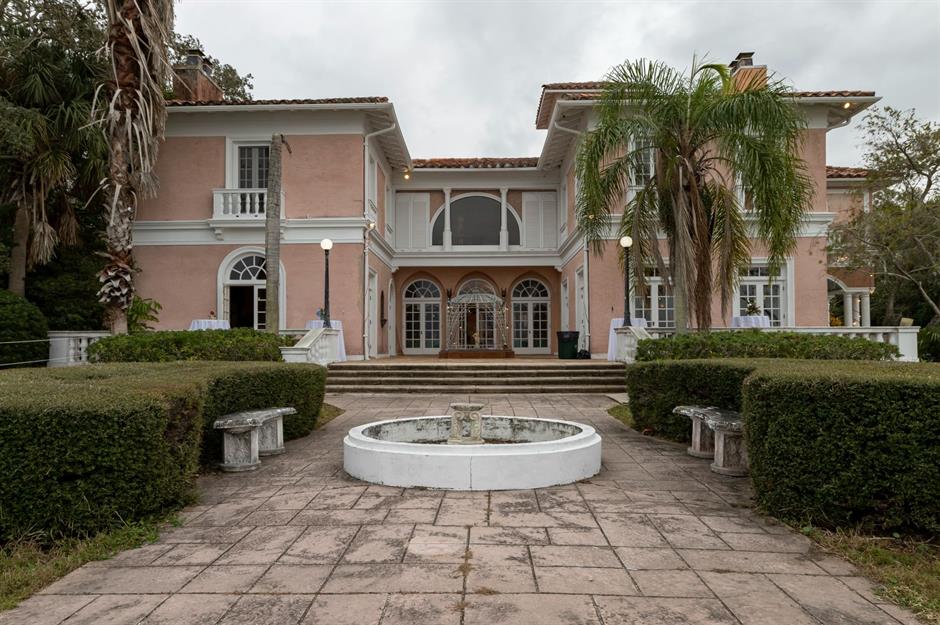
For preservationists, this was a tragic end to an enduring landmark that presided over the Florida coastline for almost 100 years. However, the legacy of the Kellogg mansion and the tales of its illustrious former owners live on, immortalised in memory – and technology.
While a new home will rise in its place, we doubt it'll be quite as enchanting as the Kellogg King's fantastical pink palace.
Loved this? Take a tour of more fascinating abandoned homes
Comments
Be the first to comment
Do you want to comment on this article? You need to be signed in for this feature